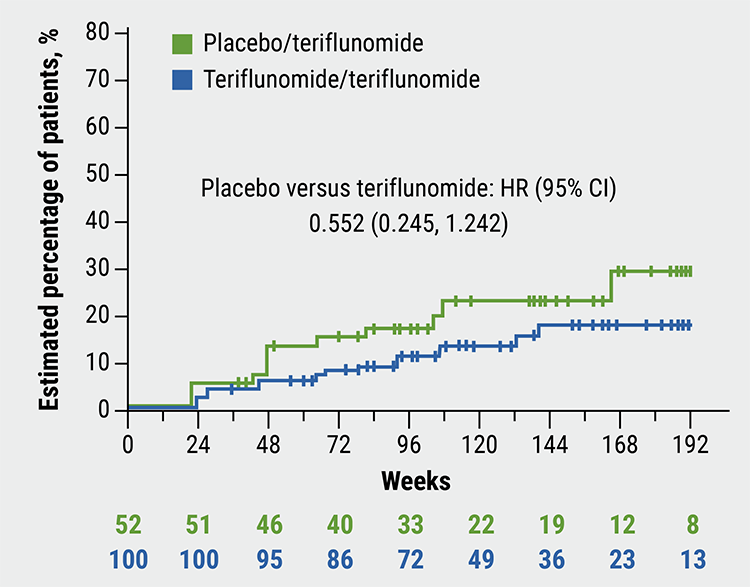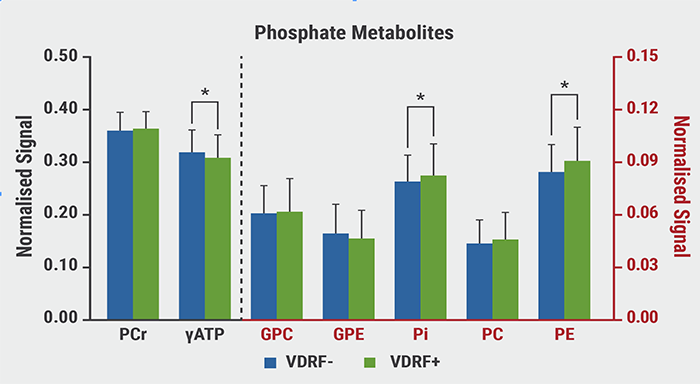 Findings from a randomised trial showed that modifying the innate immune system with masitinib had a significant effect on the Expanded Disability Status Scale (EDSS) score in patients with primary progressive multiple sclerosis (PPMS) and non-active secondary progressive MS (nSPMS). Because masitinib is a first-in-class tyrosine kinase inhibitor with a novel mechanism of action, these results present a potential new treatment option. Our journalist interviews Prof. Patrick Vermersch, Professor of Neurology at Lille University in France, and coordinating investigator of study AB07002 (NCT 01433497).
Findings from a randomised trial showed that modifying the innate immune system with masitinib had a significant effect on the Expanded Disability Status Scale (EDSS) score in patients with primary progressive multiple sclerosis (PPMS) and non-active secondary progressive MS (nSPMS). Because masitinib is a first-in-class tyrosine kinase inhibitor with a novel mechanism of action, these results present a potential new treatment option. Our journalist interviews Prof. Patrick Vermersch, Professor of Neurology at Lille University in France, and coordinating investigator of study AB07002 (NCT 01433497).Presented at the MSVirtual2020: 8th Joint ACTRIMS-ECTRIMS Meeting September 11–13, 2020 [1], the double-blinded, placebo-controlled, phase 2b/3 trial evaluated the effect of masitinib in two independent parallel groups: masitinib at 4.5 mg/kg/day versus matched placebo, and titrated masitinib 6.0 mg/kg/day versus placebo. Masitinib is thought to exert a neuroprotective effect through inhibition of survival, migration and activity of mast cells and other non-neuronal cells of the central nervous system, with subsequent modulation of inflammatory and neurodegenerative processes, through inhibition of c-Kit, Lyn, Fyn, and MCSFR-1 kinases. One proof-of-concept study had previously indicated that masitinib slows progressive MS [2].
The study evaluated patients with either PPMS or nSPMS (n=300; mean age 49.3 years; median baseline EDSS score was 5.5) every 8 weeks for a total of 96 weeks of either masitinib (n=199) or placebo (n=101). The primary endpoint was overall EDSS change from baseline, expressed as least-squares means difference (Δ-EDSS, positive value indicates worsening). Treatment effect was expressed as between-group difference (Δ-LSM, where a negative value favors masitinib).
In the first group, masitinib (4.5 mg/kg/day) was significantly beneficial compared with placebo (Δ-EDSS was 0.001 versus 0.098, respectively) and Δ-LSM was -0.097 (95% CI 0.192-0.002; P=0.0256). This treatment effect was numerically retained for the nSPMS (masitinib, n=120; placebo, n=56) and PPMS (masitinib, n=79; placebo, n=45), with an LSM of 0.104 (95% CI 0.198-0.008) and 0.128 (95% CI, 0.285 to 0.0282), respectively.
In the EDSS sensitivity analyses, masitinib was associated with a significantly (39%) higher relative probability of either reduction in EDSS progression or increase in EDSS improvement (HR=0.61; 95% CI 0.376-0.988; P=0.0446). EDSS time to progression revealed a significantly decreased relative risk of 42% with masitinib for first progression (HR=0.58; 95% CI 0.35-0.96; P=0.034) and a decreased relative risk of 37% with masitinib for 12-week confirmed progression (HR=0.63; 95% CI 0.33-1.2; P=0.159).
Efficacy results from the high-dose parallel group were inconclusive and not reported in this presentation.. In the experimental and placebo group, 94.5% and 87.1%, respectively, experienced ≥1 adverse event. There were no new safety signals reported in the masitinib arms, and the safety profile was consistent with the known profile of masitinib. Common treatment-emergent adverse events included diarrhea, nausea, rash and hematological assessments.
Our journalist asked the coordinating investigator of the study Prof. Patrick Vermersch for his perspective:
Context with other studies
“It is a small revolution. I think the data we have with masitinib is very promising for many reasons. First of all, this is the first time that we have positive results in phase 2b/3 studies in patients with purely progressive MS. We wanted to avoid a mixed population of patients, because in other recent trials the positive results are driven mainly by patients with superimposed activity at baseline [3,4]. These are not really the patients experiencing an unmet need, however. The unmet need is purely progressive MS and if you consider all the data and registries we have, this population constitutes between 40-50% of the patients. I think we need to focus on this population of patients now. However, this stringent approach meant that our study had a relatively small population. Therefore, the primary endpoint was disability progression and not the risk of confirmed disability progression over time. The results were positive quite early in the course of the trial, supporting an early improvement from masitinib.”
“We observed a 37% decrease of progression with masitinib, whereas siponimod provided only a 21% decrease in the EXPAND trial (NCT01665144) [4], similar to ocrelizumab with a 24% decrease in the with ORATORIO trial (NCT01194570) [3]. Although it is tempting to speculate that masitinib might be a better drug numerically, one of the limitations of our study was the relatively modest population, which makes it difficult to compare the data with these larger trials. Also interesting, in the post-hoc analysis, our study showed a significant decrease in the risk to be wheelchair-bound. Becoming wheelchair-bound is naturally a very strong image for patients, so it is very important to decrease the risk.”
Novel Mode of Action
“What is also interesting, is that for the first time, masitinib only targets the innate immunity; this is an advance because all the other drugs we have used until now target the adaptive immunity. We now have a growing body of evidence telling that the main driver in progressive forms of MS is not the adaptive immune system, but the innate immune system [5]. This simple fact explains why we have failed during the last decade with many drugs targeting the adaptive immune system: it was not the right target. Furthermore, the preclinical data suggests that masitinib has very good CNS penetration. Monoclonal antibodies, for example, do not pass the barrier so it is a big limitation for progressive forms of MS with so-called “compartmentalised inflammation”.
Practice Changing?
“Our study requires a phase 3 confirmatory study before it can be practice-changing. We are trying to open a new study in a couple of weeks, including 700-800 patients. The design will be masitinib versus placebo because unfortunately we have no alternative. It is ethically possible to use a placebo in progressive forms such as non-active PPMS and non-active SPMS.”
“Finally, we have some reassuring data concerning safety, that the benefits outweigh the harm. We continue to examine some signals such as skin reaction, some GI disturbances, some and the occasional report of neutropenia. However, all in all, adverse events due to masitinib are manageable, reversible, and considered by independent investigators to be mild to moderate. Masitinib is also in clinical trials in ALS and Alzheimer’s patients, so we have been able to accumulate a lot of data from thousands of patients, including old and fragile patients. Of course, we need to accumulate more data for the long-term, but for short-term use, the safety data is relatively robust and reassuring.”
- Vermersch P, et al. MSVIRTUAL2020, FC04.01.
- Vermersch P, et al. BMC Neurol. 2012 Jun 12;12:36.
- Montalban X, et al. N Engl J Med. 2017 Jan 19;376(3):209-220
- Kappos L, et al. Lancet. 2018 Mar 31;391(10127):1263-1273.
- Prinz M, et al. J Clin Invest. 2006 Feb;116(2):456-64.
Posted on
Previous Article
« Do anti-CD20 DMTs cause worse COVID-19 outcomes in MS? Next Article
AHA 2020: Polypill + aspirin prevents cardiovascular events »
« Do anti-CD20 DMTs cause worse COVID-19 outcomes in MS? Next Article
AHA 2020: Polypill + aspirin prevents cardiovascular events »
Related Articles
November 25, 2020
Assessing demyelination using myelin water imaging

November 25, 2020
TERIKIDS trial extension of teriflunomide in paediatric MS

June 16, 2021
Dysmetabolism may drive MS progression
© 2024 Medicom Medical Publishers. All rights reserved. Terms and Conditions | Privacy Policy
HEAD OFFICE
Laarderhoogtweg 25
1101 EB Amsterdam
The Netherlands
T: +31 85 4012 560
E: publishers@medicom-publishers.com

